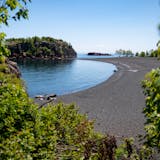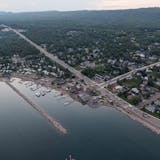At 11 p.m. on a recent Saturday, Lindy Frasl put the finishing touches on the third ice-fishing wheelhouse he has built. At 20 feet, this one was bigger than the other two, but similarly outfitted, with four bunks, a TV, bathroom and small kitchen.
Five hours later, Frasl, of Brainerd, was en route to Upper Red Lake to fish for walleyes, joining there a few thousand other ice anglers.
"Upper Red is unique because it's a big basin and there's no underwater structure in any one location that holds fish," Frasl said. "I don't stay in one spot longer than a day. I move to find fish."
"Center Bar" has been an Upper Red walleye hot spot this winter. According to the Department of Natural Resources (DNR), a thousand or more anglers have been camped there at times, many in wheelhouses. Others have fished out of portable shelters or "skid" houses, which are built on skis, or skids.
Most of these anglers have been intent on catching walleyes. But others basked in winter fishing's unique social aspects, parking their wheelhouses on the ice alongside those of friends, before firing up grills and tossing Frisbees while their kids played in the snow.
The hundreds of thousands of avid anglers who drive onto Minnesota lakes in winter are one reason fishing-license sales here have remained relatively stable, or even increased, while license sales in many other states have declined.
But the increased popularity of winter angling in the past decade or more is placing unprecedented pressure on some of Minnesota's most productive walleye lakes, among them Upper Red, Lake of the Woods and Mille Lacs.
Last winter, for example, Mille Lacs registered more than 3 million angler hours of pressure, a record, according to DNR estimates. Always popular as a winter fishing destination despite restrictions limiting cold-weather anglers to a single walleye that falls within a narrow harvest slot, Mille Lacs experienced higher angler volume last winter in part because of poor access conditions on Upper Red, because of lake slush.


